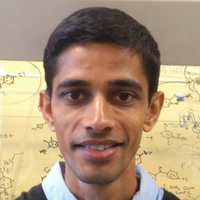A "game changing" approach to treating high-grade glioma in kids
Overview
Paediatric high-grade glioma is an aggressive and incurable form of brain cancer. Long-term survival rates for children with this type of brain cancer are low. But there is hope. New research, funded by Cure Kids, is re-designing the way we treat high-grade glioma.
Paediatric high-grade glioma
High-grade glioma is a type of cancer that affects the glial cells – found in the brain and spinal cord. ‘Glioma’ is the name given to the tumours that originate in these cells, while ‘high-grade’ means that the tumours are likely to grow and spread very quickly. Symptoms of high-grade glioma vary depending on the location of the tumours, but can include nausea, headaches, vision and hearing problems, troubles with balance, seizures, and behavioural changes.
High-grade glioma can affect children of all ages and occurs equally in girls and boys. Treatment for high-grade glioma in children is intensive – generally involving a combination of surgery, radiotherapy, and chemotherapy. Despite this, gliomas are often hard to treat – few children with this type of cancer have survived long-term.
Current treatment challenges
Ironically, one of the main challenges in treating paediatric high-grade glioma is the body’s own natural defence system called the blood-brain barrier. The blood-brain barrier is a physical barrier that protects the brain from toxins and pathogens (such as bacteria, viruses, or parasites) circulating in the blood. But, while the blood-brain barrier is vital in safeguarding the central nervous system (brain and spinal cord), it can also prevent the entry of drugs designed to treat brain cancer.
“The blood-brain barrier is a very selective semi-permeable barrier that allows only certain substances to cross into the brain,” says Dr Jiney Jose, Senior Research Fellow at the University of Auckland. “Most brain cancer drugs fail because they cannot cross the blood-brain barrier.”
A potential game changer
Dr Jose and his co-investigator, Dr Peter Choi, lead one of nine research teams chosen to receive a Project Grant from Cure Kids in 2021. For 50 years, Cure Kids has been committed to enabling research that transforms children’s health in New Zealand – and recognised Dr Jose and Dr Choi’s research as having the potential to save lives.
“If we can develop a delivery system that can take the drugs across the blood-brain barrier and specifically deliver it to the tumour site,” says Dr Jose, “we could improve treatment efficacy and reduce unwanted side effects.”
Building on previous research showing that a particular class of ‘dyes’ can cross the blood-brain barrier and gather in tumour tissues, Dr Jose and Dr Choi began working in the laboratory. What they found was promising. “When we chemically attached an anti-cancer drug to [these] dyes,” says Dr Jose, “the resulting ‘drug-dye conjugate’ can cross the blood-brain barrier, and accumulate in tumour tissues [in the brain].” This research involved simulating what happens in children’s brains using an animal model of brain cancer – approved based on ethical principles for animal welfare.
Armed with these initial findings from the laboratory, Dr Jose applied for a Project Grant from Cure Kids. “We envision that the proposed research, if successful, can significantly improve survival outcomes for patients suffering from paediatric high-grade glioma,” says Dr Jose, “many anticancer drugs can be used for treating paediatric high-grade glioma if we can improve [their ability to cross] the blood-brain barrier.”
The development of such a ‘delivery system’ is the main focus of Dr Jose and Dr Choi’s research. “And,” says Dr Jose, “could be a game-changer in treating adult and paediatric high-grade glioma.”
How you can help
It is only through the generous contributions of people like you that Cure Kids can continue to fund vital research – such as Dr Jose’s targeted therapy for the treatment of paediatric high-grade glioma. Cure Kids is committed to enabling research that has the potential to transform the health and wellbeing of our precious tamariki – but we need your help. Find out how you can become a Cure Kids donor today.

Help fund our big research.
Every bit helps.




